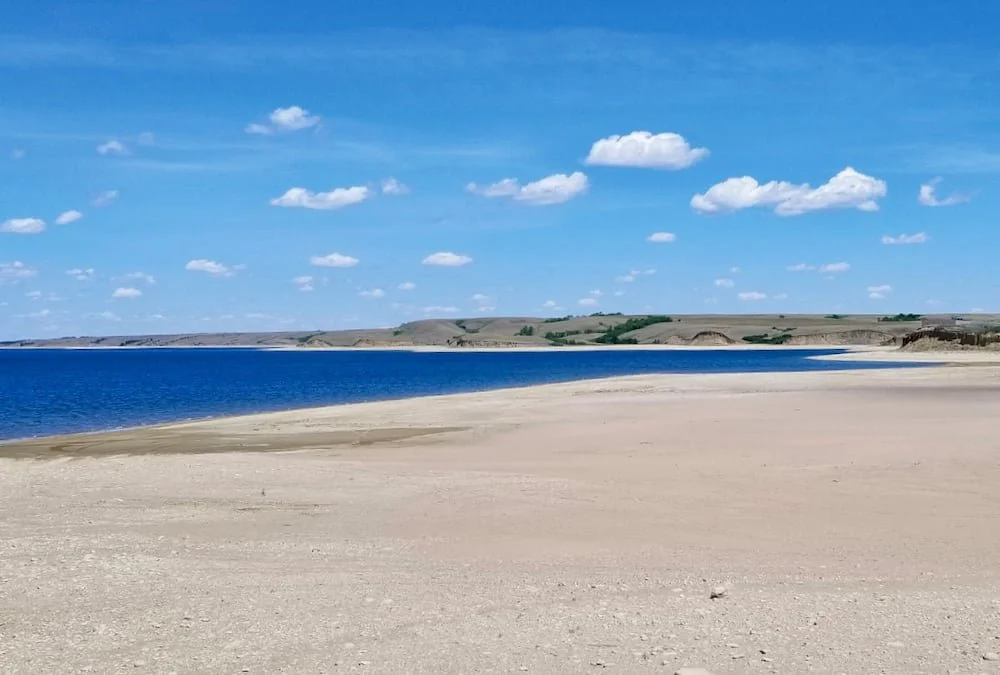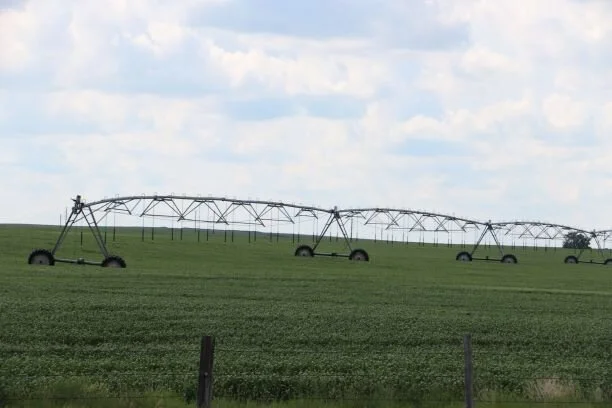Much of Alberta and Saskatchewan relies on water from melting snow in the Rocky Mountains for replenishment of waterways in the summer. But John Pomeroy — director of the University of Saskatchewan's Coldwater Laboratory in Canmore, Alta. — told CBC that this past winter provided one of the lowest snowpacks he's seen. The snow also melted about six weeks earlier than anticipated, fuelled by the unseasonably warm weather.
Are the reservoir dog days ending?
In 1967, when the Gardiner Dam backed up the South Saskatchewan River to create the 200-km-long Lake Diefenbaker in the middle of Saskatchewan, the plan was to irrigate 500,000 parched acres. To this day, the giant T-shaped lake — named after Saskatchewan politician and Canada’s 13th Prime Minister, John George Diefenbaker — irrigates only 100,000 to 150,000 acres. “The Dief” is, one might say, an untapped resource, a ’60s-era feat of engineering stuck in vaporization mode. (It is said the lake loses more water to evaporation each year than it gives up for crop watering.)
Sask.'s Lake Diefenbaker irrigation project was announced 3 years ago. Where is it now?
Almost three years after a major Saskatchewan irrigation project was announced, the head of a group representing rural municipalities says the provincial government should "get on" with it — while an organization that represents First Nations says the province should have consulted with those communities more. But where is the Lake Diefenbaker project now?
Rural municipalities want Sask. government to speed up Lake Diefenbaker irrigation project
The Lake Diefenbaker irrigation project is expected to double the amount of irrigable land in Saskatchewan. The Saskatchewan Association of Rural Municipalities wants to make sure it gets done — and soon. Last week, SARM called on the provincial government to provide an update on the state of the irrigation expansion works. "We want this project to go ahead as soon as possible," SARM president Ray Orb said. "We want to make sure that the province is dedicated to finishing these projects, and doing that on a timely basis."
Riverhurst Ferry in Sask. beached indefinitely because of low water levels
Spring is well underway in Saskatchewan, but one of the province's busiest ferries still hasn't been able to open. The Riverhurst Ferry, located northwest of Moose Jaw, typically transports about 30,000 vehicles annually over the South Saskatchewan River, according to the Ministry of Highways, which operates the vessel. But water levels are too low for it to begin operations. Levels in Lake Diefenbaker are about a metre-and-a-half below normal for this time of year, according to a spokesperson for the Ministry of Highways. Diefenbaker is a human-made lake, located north of the Riverhurst Ferry and fed by the South Saskatchewan River.
Water Security Agency Holds Open House Events For Lake Diefenbaker Irrigation Projects
The public is invited to take part in a couple of open house events this week to learn more about the Lake Diefenbaker Irrigation Projects. The 10 year multi-project is expected to provide a major boost for the Province's agriculture sector. Once completed, the Lake Diefenbaker Projects will provide over 500,000 acres of agricultural land in southern and central Saskatchewan with water. Patrick Boyle, the Executive Director of Communications with the Water Security Agency, says they are holding a couple of open house events this week so that people have a better understanding of the work that is being planned and the impact it will have for the areas.
Moe sees lots of opportunity with irrigation expansion
One of the cornerstone announcements in the last year for the Saskatchewan agriculture sectors has been the launch of the Lake Diefenbaker Irrigation Expansion Project by the provincial government. The April 6 budget was the first provincial budget since that announcement, but so far, the dollar figures are relatively small – just $18.9 million this year for the Westside Expansion Project. But Premier Scott Moe sees a big future, a little further down that water pipeline, as it were.
'An abomination': Sask. water expert warns of contamination following Alberta's coal policy changes
Alberta's plan to allow for open-pit coal mining in the Rocky Mountains could be a serious threat to Saskatchewan's water supply, says the director of the Global Water Futures Project at the University of Saskatchewan. "For a water scientist to see this happening, it's just an abomination to have these types of developments suggested in the headwaters of the rivers that supply drinking water and the economy for most of Saskatchewan," John Pomeroy told CBC's Blue Sky. Last spring, the Alberta government revoked a 1976 policy that blocked open-pit coal mining on the eastern slopes and peaks of the Rockies.









